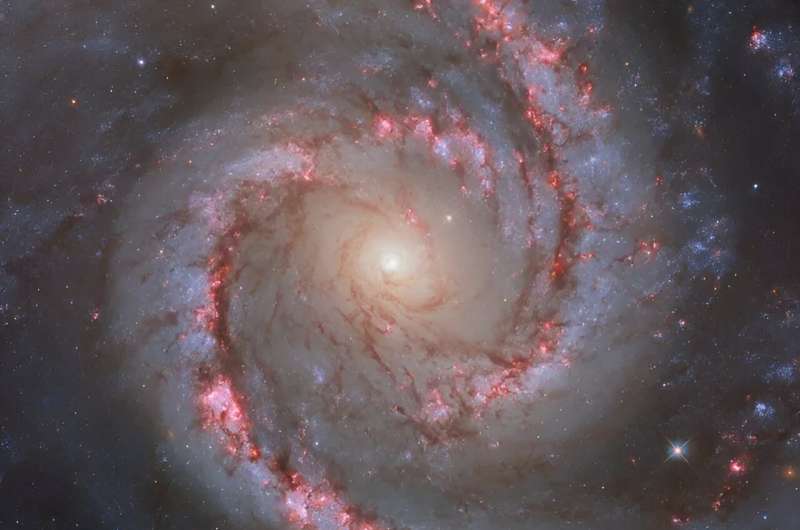In a dazzling display of cosmic beauty, the Hubble Space Telescope has captured the mesmerizing spiral galaxy NGC 1566, affectionately known as the "Spanish Dancer Galaxy." This celestial masterpiece showcases the graceful and vividly swirling lines of NGC 1566's spiral arms, reminiscent of a dancer's captivating movements. Situated in the constellation Dorado, this celestial ballet unfolds 60 million light-years away from Earth, making it a captivating member of the Dorado galaxy group.
NGC 1566, a weakly-barred or intermediate spiral galaxy, is an astronomical wonder, not only for its captivating appearance but also for its place in the universe. The galaxy's nickname is a testament to the enchanting artistry of the cosmos, where nature's brush strokes create breathtaking displays of color and form.
Galaxy groups, such as the Dorado galaxy group, are fascinating collections of gravitationally bound galaxies. They represent a significant portion of our universe, with more than 50% of all galaxies residing in such groups. Galaxy groups differ from galaxy clusters, which can contain hundreds of galaxies. While there is no strict boundary defining the difference between a galaxy group and a galaxy cluster, some astronomers suggest that groups should be classified as such if they contain fewer than 80 trillion Suns.
 |
| This NASA Hubble Space Telescope image features the spiral galaxy NGC 1566. Credit: ESA/Hubble & NASA, D. Calzetti and the LEGUS team, R. Chandar |
The membership of the Dorado group has been a subject of flux in recent decades, with changes in the list of constituent galaxies documented in various scientific papers. This uncertainty highlights the challenge astronomers face when identifying members of galaxy groups like the Dorado group.
To better grasp the complexity of this issue, consider the analogy of a photograph featuring an adult human and a towering oak tree. We know the approximate sizes of both the person and the tree, and if we see a photo in which the person appears to be the same size as the tree, we can deduce that the person is much closer to the camera than the tree.
Astronomers grapple with a similar dilemma when determining the proximity of galaxies within a group. They lack precise information about the size of individual galaxies and must discern whether these galaxies are genuinely close to each other in space or if some are much closer or further away. While advancements in observation techniques have made this process more manageable, it remains a challenging endeavor for astronomers.
As the Hubble Space Telescope continues to unveil the cosmic wonders of our universe, NGC 1566, the "Spanish Dancer Galaxy," stands as a captivating testament to the celestial ballet that unfolds beyond our world, inspiring both scientists and stargazers alike.



0 Comments